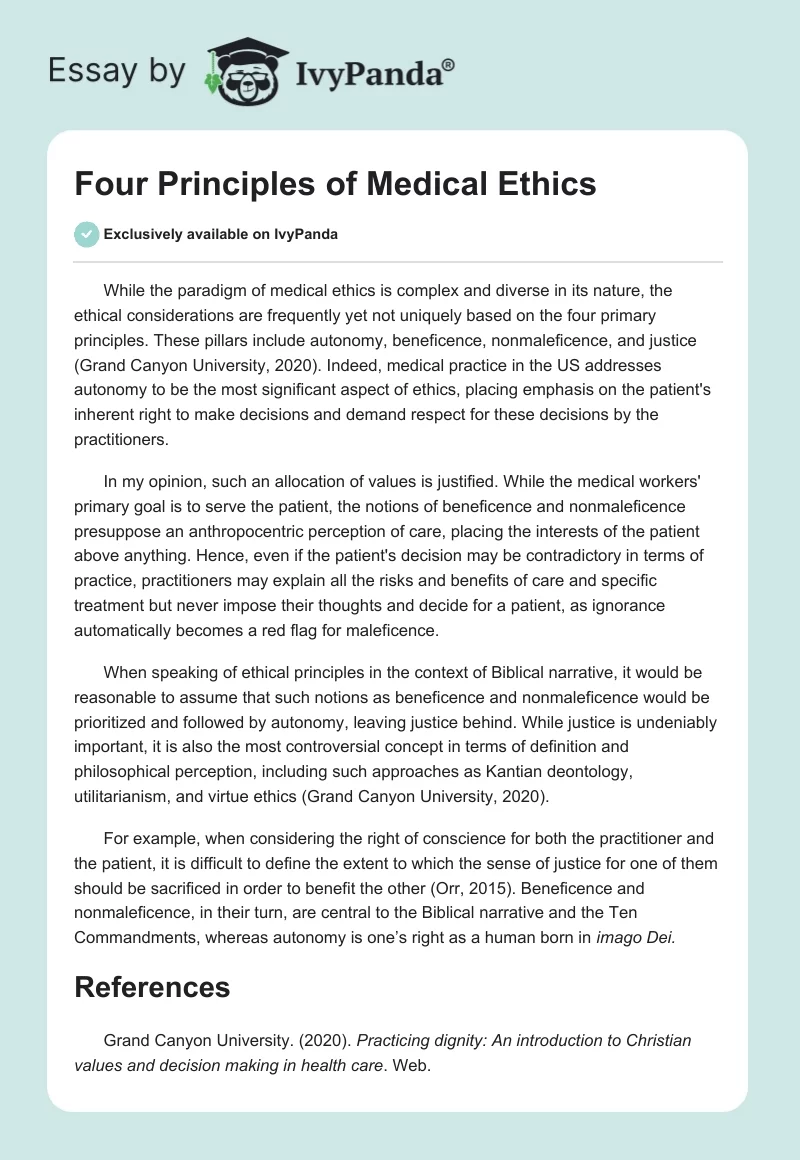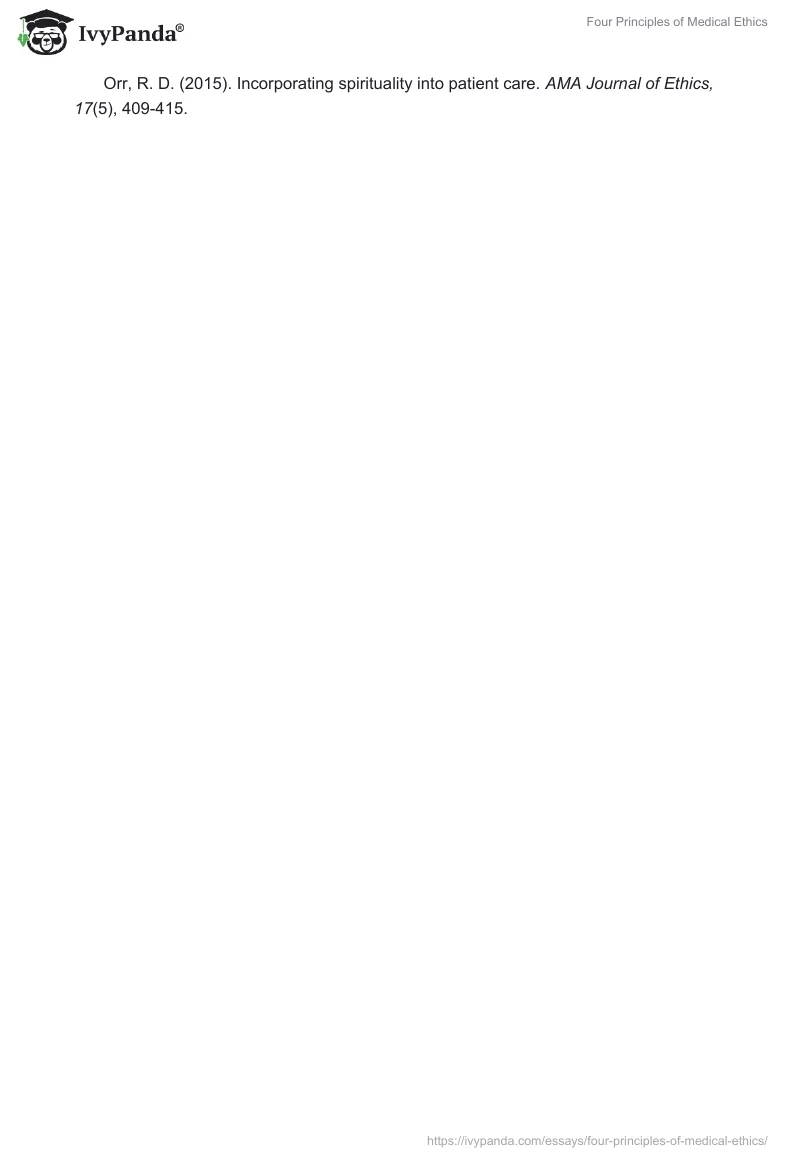While the paradigm of medical ethics is complex and diverse in its nature, the ethical considerations are frequently yet not uniquely based on the four primary principles. These pillars include autonomy, beneficence, nonmaleficence, and justice (Grand Canyon University, 2020). Indeed, medical practice in the US addresses autonomy to be the most significant aspect of ethics, placing emphasis on the patient’s inherent right to make decisions and demand respect for these decisions by the practitioners.
In my opinion, such an allocation of values is justified. While the medical workers’ primary goal is to serve the patient, the notions of beneficence and nonmaleficence presuppose an anthropocentric perception of care, placing the interests of the patient above anything. Hence, even if the patient’s decision may be contradictory in terms of practice, practitioners may explain all the risks and benefits of care and specific treatment but never impose their thoughts and decide for a patient, as ignorance automatically becomes a red flag for maleficence.
When speaking of ethical principles in the context of Biblical narrative, it would be reasonable to assume that such notions as beneficence and nonmaleficence would be prioritized and followed by autonomy, leaving justice behind. While justice is undeniably important, it is also the most controversial concept in terms of definition and philosophical perception, including such approaches as Kantian deontology, utilitarianism, and virtue ethics (Grand Canyon University, 2020).
For example, when considering the right of conscience for both the practitioner and the patient, it is difficult to define the extent to which the sense of justice for one of them should be sacrificed in order to benefit the other (Orr, 2015). Beneficence and nonmaleficence, in their turn, are central to the Biblical narrative and the Ten Commandments, whereas autonomy is one’s right as a human born in imago Dei.
References
Grand Canyon University. (2020). Practicing dignity: An introduction to Christian values and decision making in health care. Web.
Orr, R. D. (2015). Incorporating spirituality into patient care. AMA Journal of Ethics, 17(5), 409-415.


